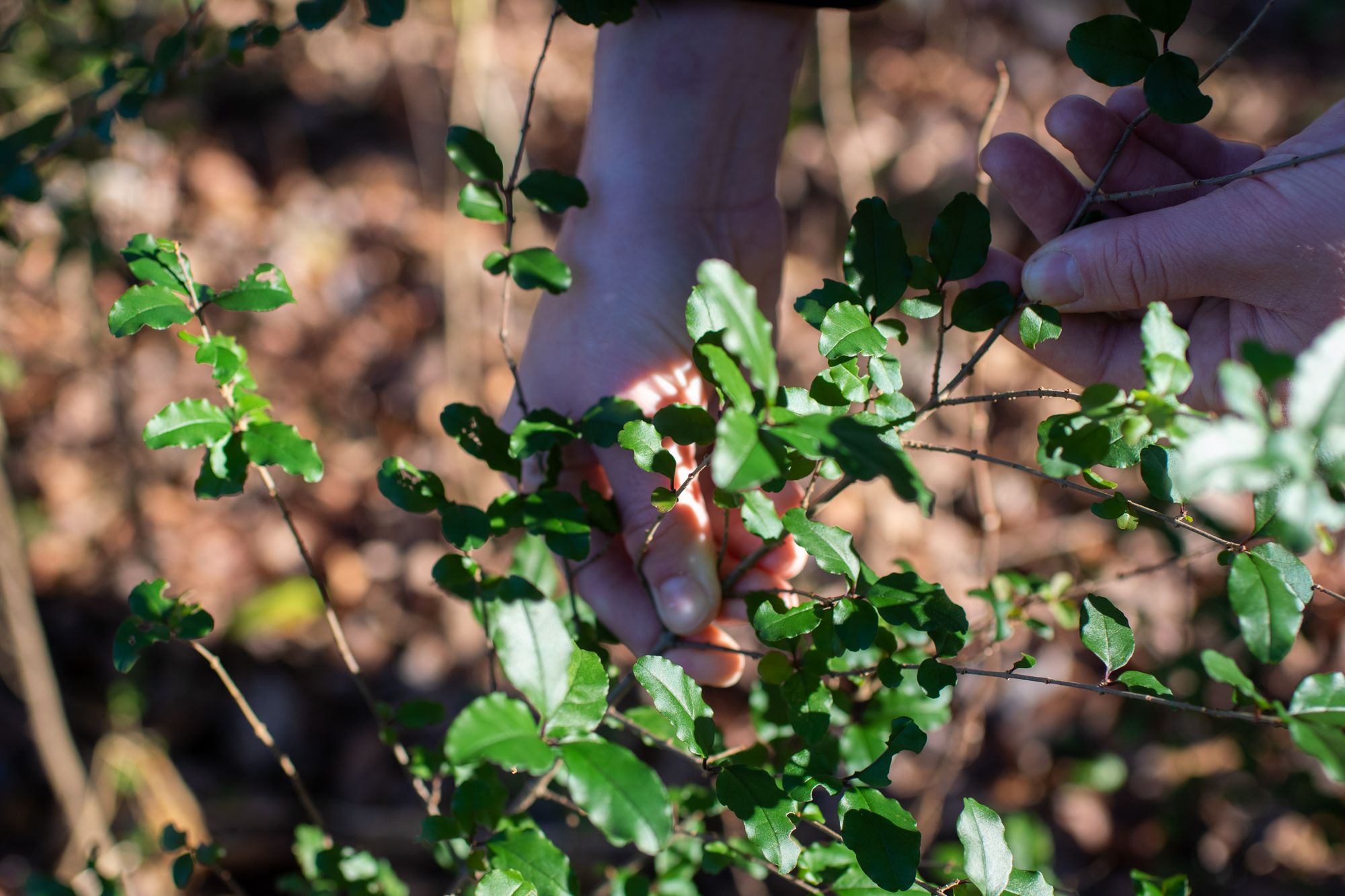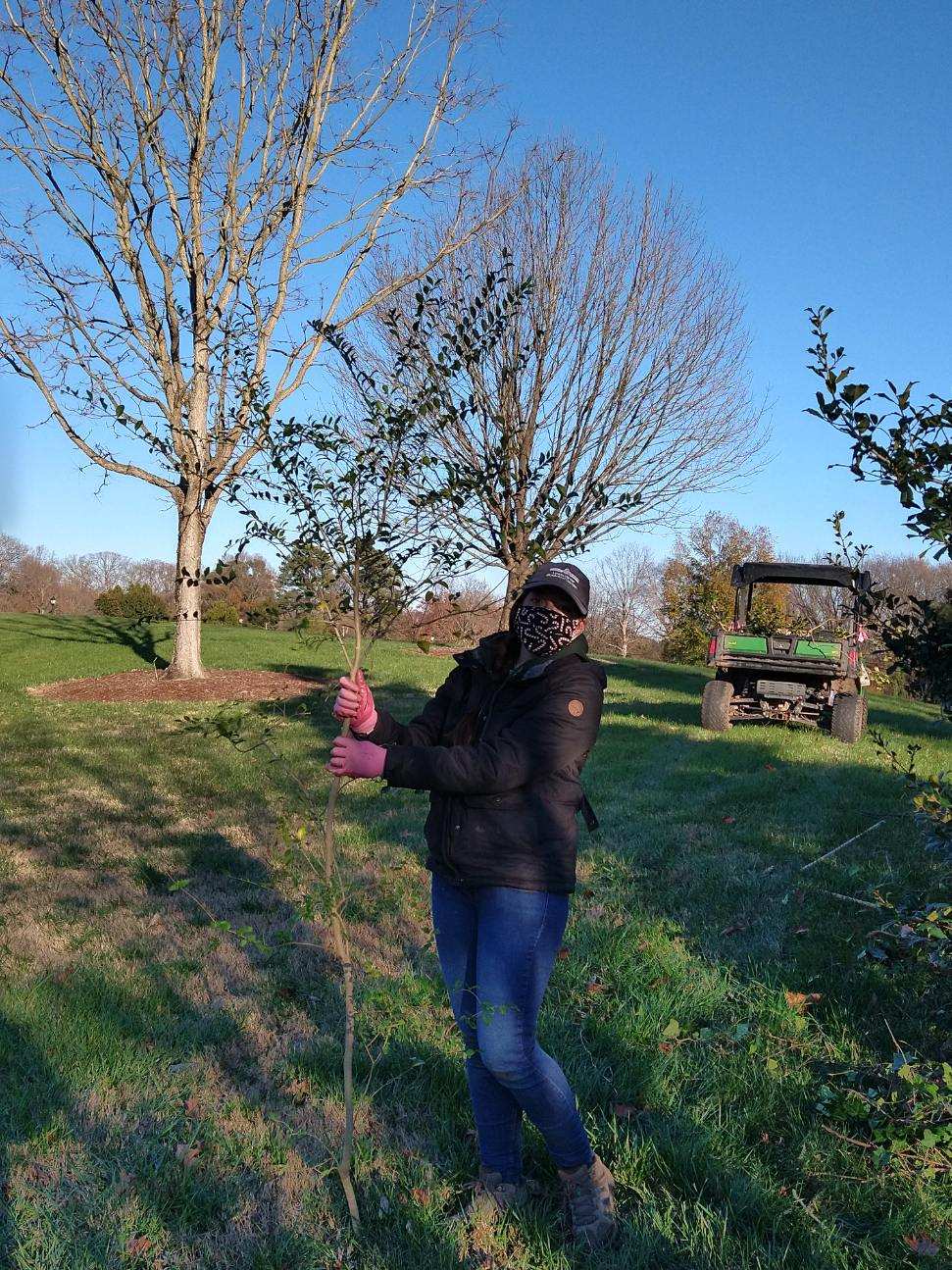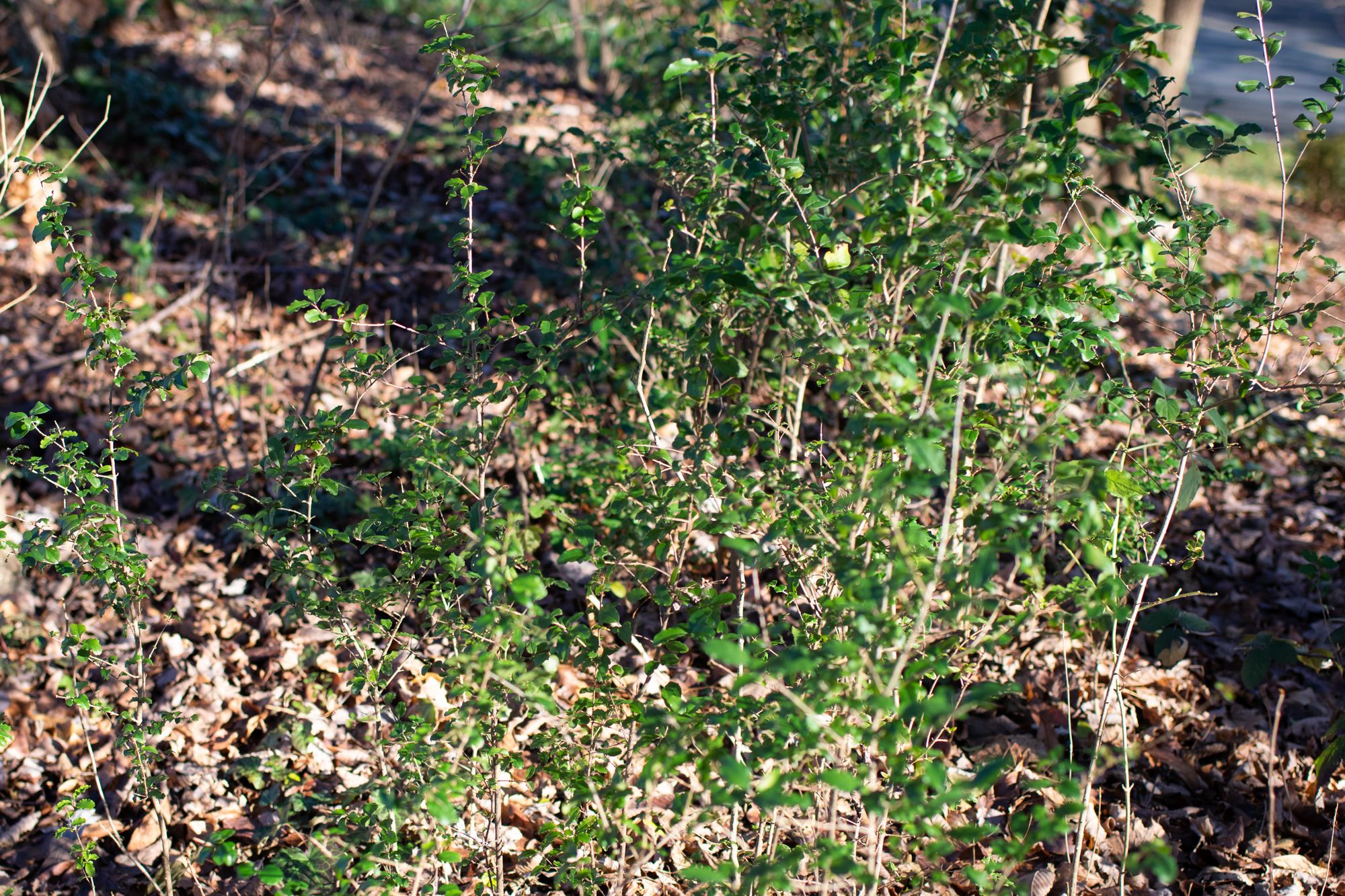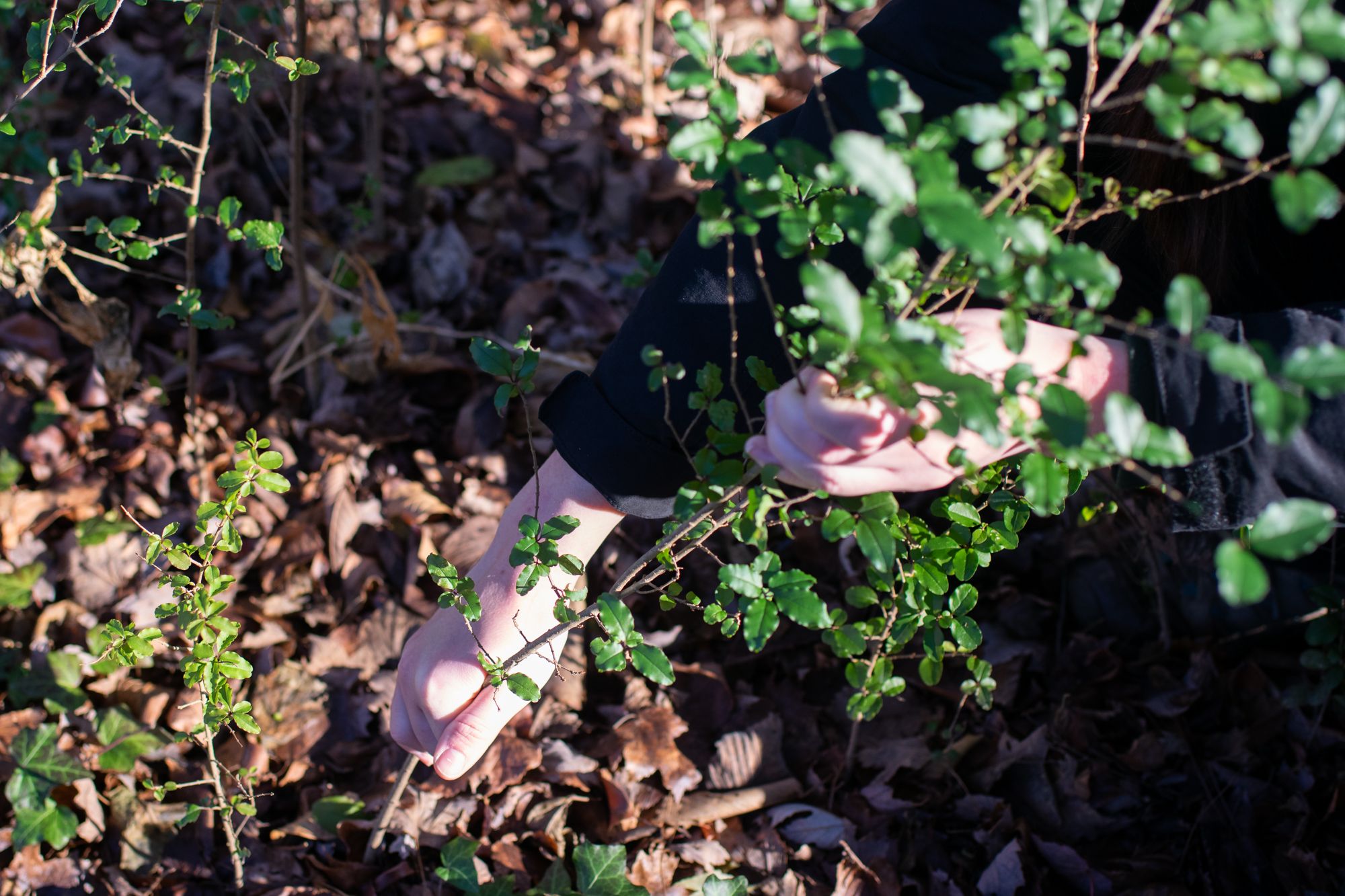Chinese Privet: A “Dirty Dozen” Plant
This week’s featured member of the “Dirty Dozen” is Chinese privet (Ligustrum sinense). Though several southern states, including Virginia, have recognized this plant in their invasive species lists or laws, unfortunately, Chinese privet remains a commonly sold and planted ornamental shrub. Keep reading to find out why you should stop planting it and how to remove it.

Chinese privet has evergreen foliage and leaf blades up to two inches long. Image by Nicole Plummer.
Chinese Privet
Ligustrum sinense is a member of the olive family (Oleaceae). It can grow up to 30 feet tall but usually reaches heights between 5 and 12 feet. It reproduces both sexually (by seed) and vegetatively (by root suckers). It blooms in late spring and has small white flowers. L. sinense fruit, though toxic to humans, are spread by birds, which can accelerate its takeover of native plant communities.

This L. sinense specimen was found growing under an American Holly (Ilex opaca). Image by Jason Hechler.
How Did it Get Here?
Native to China, L. sinense was intentionally brought to the U.S. in 1852 (PDF) for ornamental uses. It is usually planted as a hedgerow shrub, and its cuttings are used in floral arrangements.
Where is it Found?
Geographic Region: L. sinense is listed as a high-risk invasive species (PDF) for all of Virginia. This helpful map shows that while it has primarily invaded the Southeast, it has been spotted as far north as Massachusetts.
Habitats: Chinese privet can tolerate diverse soil and light conditions, but it particularly thrives in damp areas like streamsides and bottomlands. Like most invasives, it also grows well in disturbed areas such as roadsides. At the Garden, we have found L. sinense seedlings competing with the seedlings of other shrubs and trees along fences and roads.
What is the Impact of Chinese Privet on the Environment?
Chinese privet has escaped cultivation (PDF) and naturalized in environments ranging from forest understories and streamsides to disturbed environments like roadsides. In forests, it dominates the shrub layer, shades out all herbaceous plants, and suppresses the growth of tree seedlings.
What Options Exist for Controlling Chinese Privet?
First, if you think you have found a patch of Chinese privet, be sure to report it to the Virginia Invasive Species Working Group. Unlike other privets, L. sinense has tiny hairs (PDF) on twigs and on the undersides of leaves.
Prevention: Removing individual plants before they flower (thus eliminating opportunities for sexual reproduction) will slow down the spread. Preventing large-scale invasions is easier when plants are small; therefore, if you see Chinese privet seedlings, take the time to remove them. It could save you hours in the long run!
Mechanical: Because Chinese privet has shallow roots, individual plants with stems less than one inch in diameter can be pulled by hand. All roots must be dug out to prevent them from resprouting (PDF). For this reason, mowing or cutting back L. sinense may actually stimulate more growth, so we do not recommend this as a mechanical removal strategy.
Chemical: While mechanical removal is usually the most ecologically sound option, there is a reason why chemical control is a part of the USDA’s integrated pest management roadmap (PDF). There are instances when the use of herbicides is less harmful to the environment than mechanical removal. For example, if Chinese privet has completely taken over a hillside or streambank, and removal by hand or with equipment will significantly erode the soil, it may be necessary to use herbicides to mitigate damage done to the surrounding ecosystem. In fact, the Environmental Protection Agency (PDF) notes that sediment is the most common pollutant of waterways in the United States. If you think the Chinese privet invasion at hand requires the use of herbicides, the Virginia Department of Conservation and Recreation (PDF) recommends applying glyphosate to foliage in late fall, after the majority of native plants have dropped their leaves. As always, please follow all labels and consult with your local Virginia Cooperative Extension office for assistance if needed.
What are Native Substitutes?
If you are looking for native alternatives to Chinese privet (or any privet for that matter), try blackhaw (Viburnum prunifolium), devil wood (Osmanthus americanus) or Carolina cherry laurel (Prunus caroliniana).
Want to Know More?
For more information, check out Invasive Alien Species of Virginia (PDF) and the USDA National Invasive Species Information Center.

